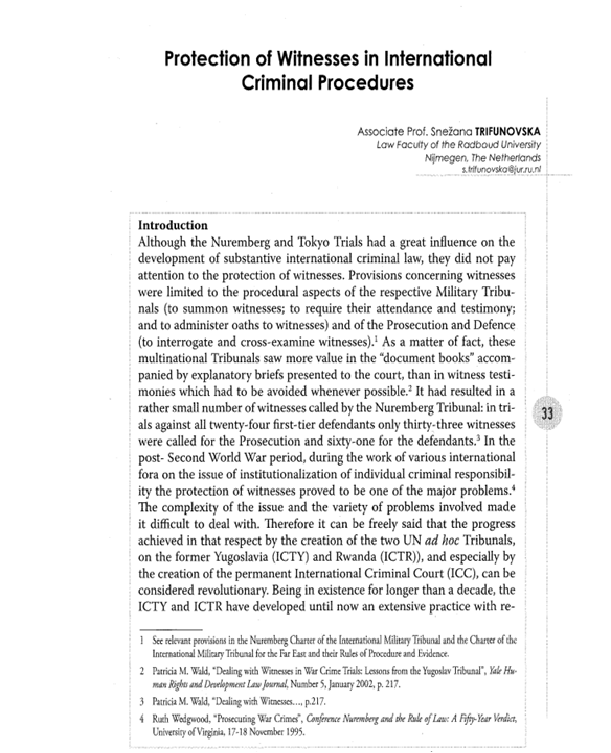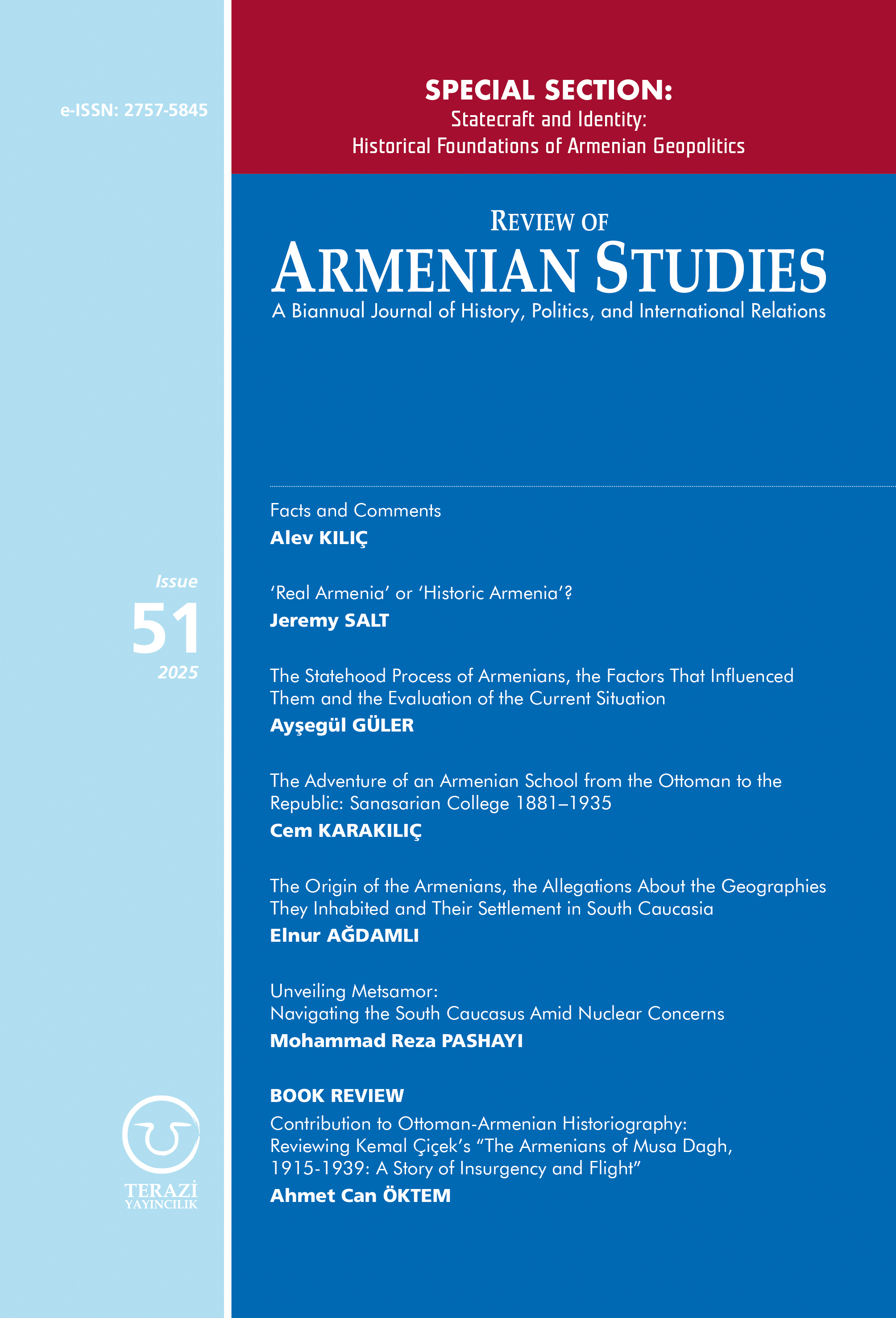
International Crimes and History Journal
Date of Publication: 2006
Author: Snezana TRIFUNOVSKA
Although the Nuremberg and Tokyo Trials had a great influence on the development of substantive international criminal law, they did not pay attention to the protection of witnesses. Provisions conceming witnesses were limited to the procedural aspects of the respective Military Tribunals (to summon witnesses; to require their attendance and testimony; and to administer oaths to witnesses) and of the Prosecution and Defence (to interrogate and cross-examine witnesses). As a matter of fact, these multinational Tribunals saw more value in the "document books" accompanied by explanatory briefs presented to the court, than in witness testimonies which had to be avoided whenever possible. it had resulted in a rather smaIl number of witnesses called by the Nuremberg Tribunal: in trials against all twenty-four first-tier defendants only thirty-three witnesses were called for the Prosecution and sixty-one for the defendants. In the post- Second World War period, during the work of various international fo ra on the issue of institutionalization of individual criminal responsibility the protection of witnesses proved to be one of the major problems. The complexity of the issue and the variety of problems involved made it difficult to deal with. Therefore it can be freely said that the progress achieved in that respect by the creation of the two UN ad hac Tribunals, on the former Yugoslavia (ICTY) and Rwanda (ICTR)), and especially by the creation of the permanent International Criminal Court (ICe), can be considered revolutionary. Being in existence for longer than a decade, the ICTY and ICTR have developed until now an extensive practice with regard to witnesses and witness protection.
No comments yet.
-
25.01.2016
THE ARMENIAN QUESTION - BASIC KNOWLEDGE AND DOCUMENTATION -
12.06.2024
THE TRUTH WILL OUT -
27.03.2023
RADİKAL ERMENİ UNSURLARCA GERÇEKLEŞTİRİLEN MEZALİMLER VE VANDALİZM -
17.03.2023
PATRIOTISM PERVERTED -
23.02.2023
MEN ARE LIKE THAT -
03.02.2023
BAKÜ-TİFLİS-CEYHAN BORU HATTININ YAŞANAN TARİHİ -
16.12.2022
INTERNATIONAL SCHOLARS ON THE EVENTS OF 1915 -
07.12.2022
FAKE PHOTOS AND THE ARMENIAN PROPAGANDA -
07.12.2022
ERMENİ PROPAGANDASI VE SAHTE RESİMLER -
01.01.2022
A Letter From Japan - Strategically Mum: The Silence of the Armenians -
01.01.2022
Japonya'dan Bir Mektup - Stratejik Suskunluk: Ermenilerin Sessizliği -
03.06.2020
Anastas Mikoyan: Confessions of an Armenian Bolshevik -
08.04.2020
Sovyet Sonrası Ukrayna’da Devlet, Toplum ve Siyaset - Değişen Dinamikler, Dönüşen Kimlikler -
12.06.2018
Ermeni Sorunuyla İlgili İngiliz Belgeleri (1912-1923) - British Documents on Armenian Question (1912-1923) -
02.12.2016
Turkish-Russian Academics: A Historical Study on the Caucasus -
01.07.2016
Gürcistan'daki Müslüman Topluluklar: Azınlık Hakları, Kimlik, Siyaset -
10.03.2016
Armenian Diaspora: Diaspora, State and the Imagination of the Republic of Armenia -
24.01.2016
ERMENİ SORUNU - TEMEL BİLGİ VE BELGELER (2. BASKI)
-
AVİM Conference Hall 24.01.2023
CONFERENCE TITLED “HUNGARY’S PERSPECTIVES ON THE TURKIC WORLD"









